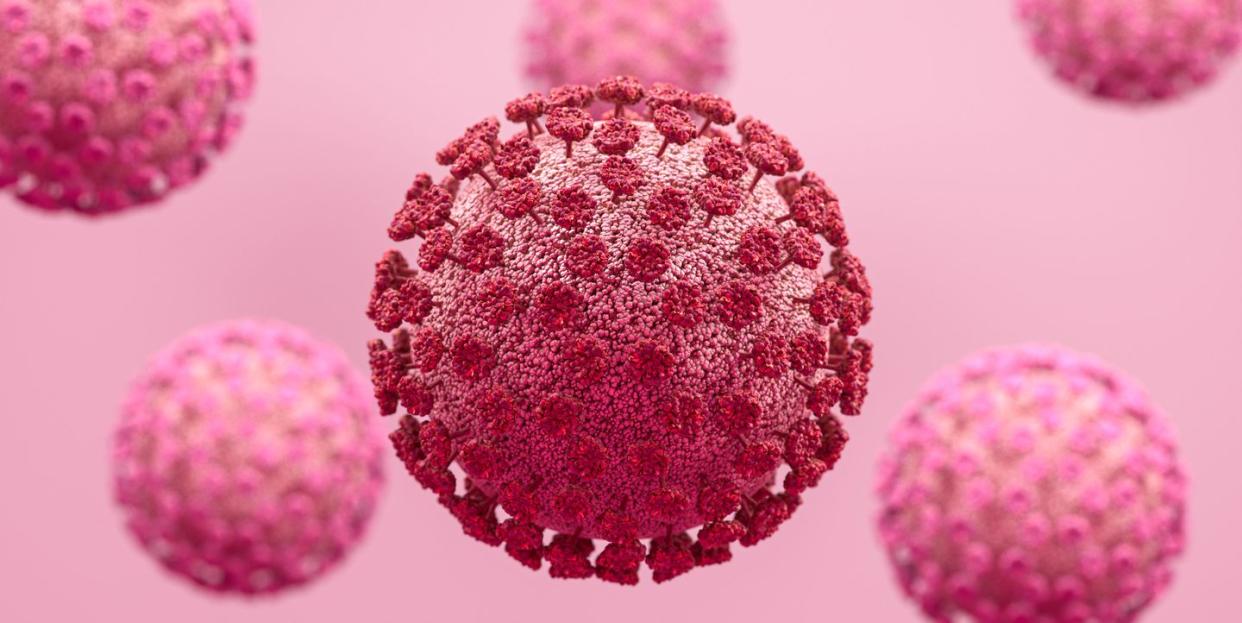This is what COVID-19 actually stands for

Since the beginning of the coronavirus pandemic, we've been introduced to a whole load of new words that never really had a place in our dialogue before. We're now uttering the phrase 'social distancing' 65 times a day, we talk about incubation periods like they're annual leave, and we're now interchanging 'coronavirus' with 'COVID-19' in everyday conversation just so we don't sound like a broken record.
But, on that, do you actually know what COVID-19 stands for? It's the more scientific term used to describe the highly contagious virus that's spreading fast around the world, but you might be surprised to learn that the name itself is not derived from anything particularly complex. In fact, it's a simple acronym.
COVID-19 stands for Coronavirus Disease 2019. Coronavirus Disease 2019. The virus was first reported to the World Health Organisation’s (WHO) China office on December 31, 2019, hence it was allocated the '19'.
As we now know, there are 'coronaviruses' aplenty going round, but COVID-19 was discovered to be a completely novel strain; nothing experts had ever seen before.

Scientists still don't know many of the specifics surrounding coronavirus, but as the cases increase we're learning more. We know the key symptoms are a dry, persistent cough and a fever - though not everyone displays these. Some people go on to suffer shortness of breath, but again, not everyone gets this.
Doctors have noticed symptomatic patterns among some COVID-19 patients that include loss of smell and taste, though more research needs to be carried out in this area to conclude whether either is a common sign of the virus. Vomiting and diarrhoea are also possible symptoms in "rare" cases of mild coronavirus, according to the WHO.

We know coronavirus is extremely contagious. Contagion is measured using the R0 (pronounced R-zero) scale, and each COVID-19-infected person is believed to infect an average of 2.25 other people. For comparison, seasonal influenza has an R0 of 1.28, which is quite low. Measles, on the other hand, has a high R0 of between 12 and 18.
Where death rate is concerned, there are also still a lot of unknowns. The death rate is estimated to be around 4% globally according to WHO figures. But these numbers can't be relied upon properly; many more people who currently have severe illness as a result of COVID-19 will go on to die, meaning the rate could be higher. But conversely, the number of people who have mild or asymptotic cases of coronavirus and therefore haven't been tested is unknown. There could theoretically be lots of these globally, which could bring the death rate down.
The one thing we do know is what we can do to help: stay home, and save lives.
The information in this story is accurate as of the publication date. While we are attempting to keep our content as up-to-date as possible, the situation surrounding the coronavirus pandemic continues to develop rapidly, so it's possible that some information and recommendations may have changed since publishing. For any concerns and latest advice, visit the World Health Organisation. If you're in the UK, the National Health Service can also provide useful information and support, while US users can contact the Center for Disease Control and Prevention.
Like this article? Sign up to our newsletter to get more articles like this delivered straight to your inbox.
You Might Also Like
